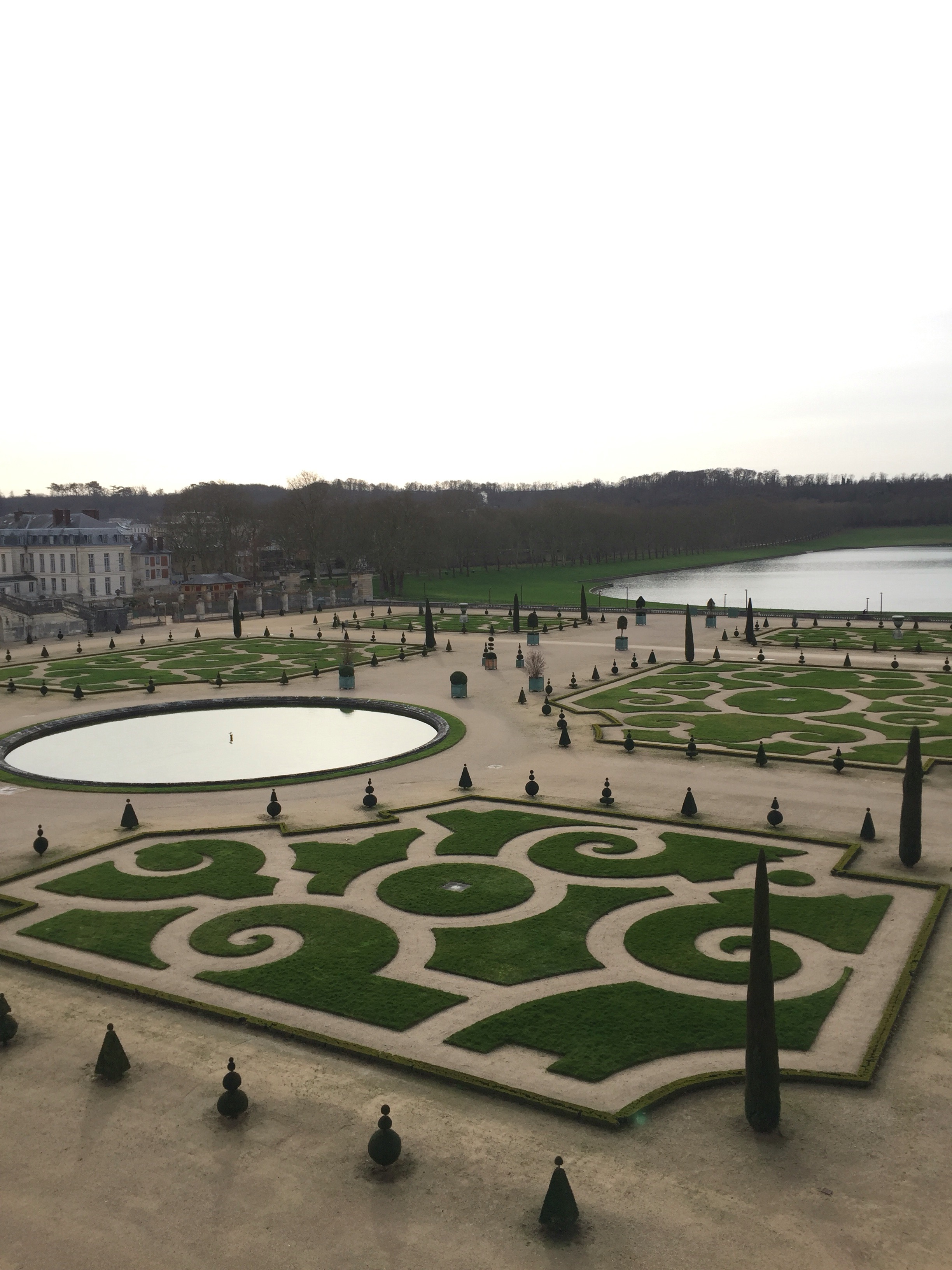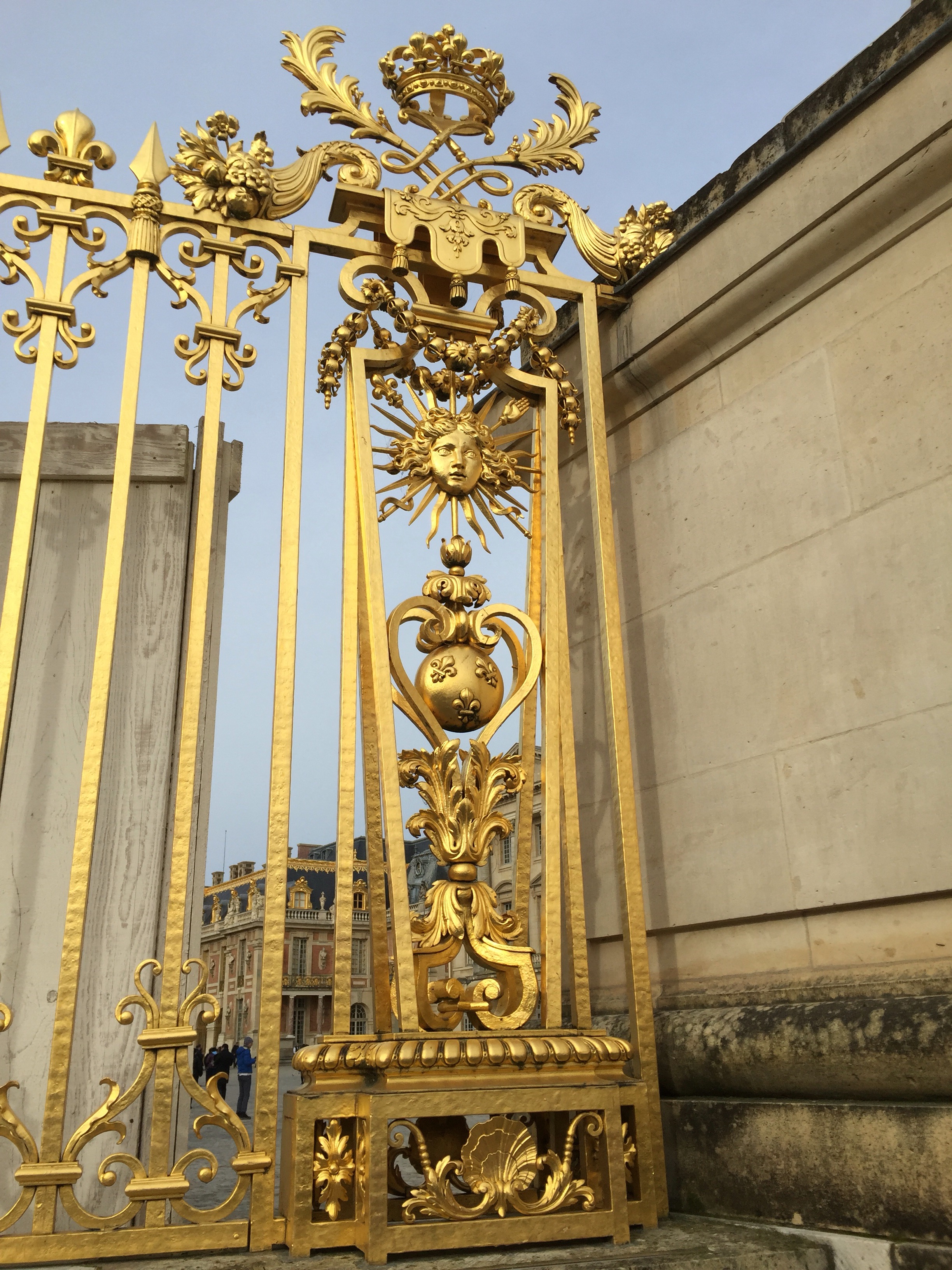On day 13 of our study abroad, we traveled southwest from Paris to Versailles. The history of Versailles began with the reign of King Louis XIII. Louis XIII enjoyed hunting, and Versailles happened to be his favorite hunting destination. Therefore, he decided to built a grand hunting lodge there in which he could leave his home in Paris to take a break from his duties as king. The lodge was later expanded and turned into a magnificent palace by King Louis XIV. King Louis XIV was the longest reigning king from 1643-1715. Versailles served as a place for Louis the 14th to establish himself as the sole ruler of France by the rural aspect of the palace, but also close enough to Paris to govern. Versailles had a sole purpose in order for Louis to succeed. The palace served as a place where the king could unite with the imaginary kings of Greek mythology, “L’état, c’est moi”. An example of this can still be found to this day; the gardens (designed by Le Notre) provided an opportunity for the Sun King to demonstrate his powers found in the landscape around the gardens. This was extremely important to Louis for governing his kingdom thoroughly. In 1682, Louis XIV was pleased with the level of expansion done on the palace and proclaimed it to be his primary residence and the centralized government of France.
Culturally, Versailles gave the opportunities for Louis XIV to enhance his image to his kingdom and to boast his power to the surrounding powers in other countries. Louis respected those before him, such as major architects and artists. Still to this day, paintings and physical features of the palace that represent these architects can still be found. Louis used this to his full advantage. When a visitor would come to the palace, he would purposely take them through the gardens and other features to show them the vastness and power of France as a tactic of intimidation. With the assistance of those giving praise to the kingdom from this tactic, the Palace of Versailles became a shrine to Louis’ greatness and power. Everything about the palace built the ultimate picture and symbol of a monarch with sheer power, which gave Louis an indisputable claim to greatness and a symbol found world wide. Louis often starred in plays which gave him a viewpoint to those as God. In 1663 he founded the Academy of Dance, which ensured that these plays were carried out routinely to ensure power.
The palace housed two other rulers in its time, King Louis XV and Louis XVI. It was designed to be the highest point in Versailles, confirming that the king was above all others. The only thing allowed to be higher than the king was the church, which was built right beside the palace. The rule continues to hold to this day, and the city of Versailles does not allow any other building or structure to surpass the height of the palace.
The royal family was forced to return to Paris, the capitol of France, after the French Revolution in 1789. About forty years later, the palace was made into a museum and continues to be a popular tourist attraction to this day.
We were able to peruse the palace for about an hour and were impressed by all of the paintings and architecture in the space. Today, the Palace of Versailles serves as a vast learning experience that gives the perspective of the power found in France’s Monarchy. It also serves as a place of remembrance to the artifacts, sculptures, woodwork, and other physical features of the palace. Each of these created the power of the palace and gives the learning experience behind the meaning and purpose for years to come. Overall, the experience with Versailles still to this day gives visitors the same experiences as those who have visited when the palace still served as a home for the king. With gold leaf on just about everything and its original architecture, Versailles stands and will stand the test of time for years to come.







Post by: Brianna Voelker and Ryan Lepski


